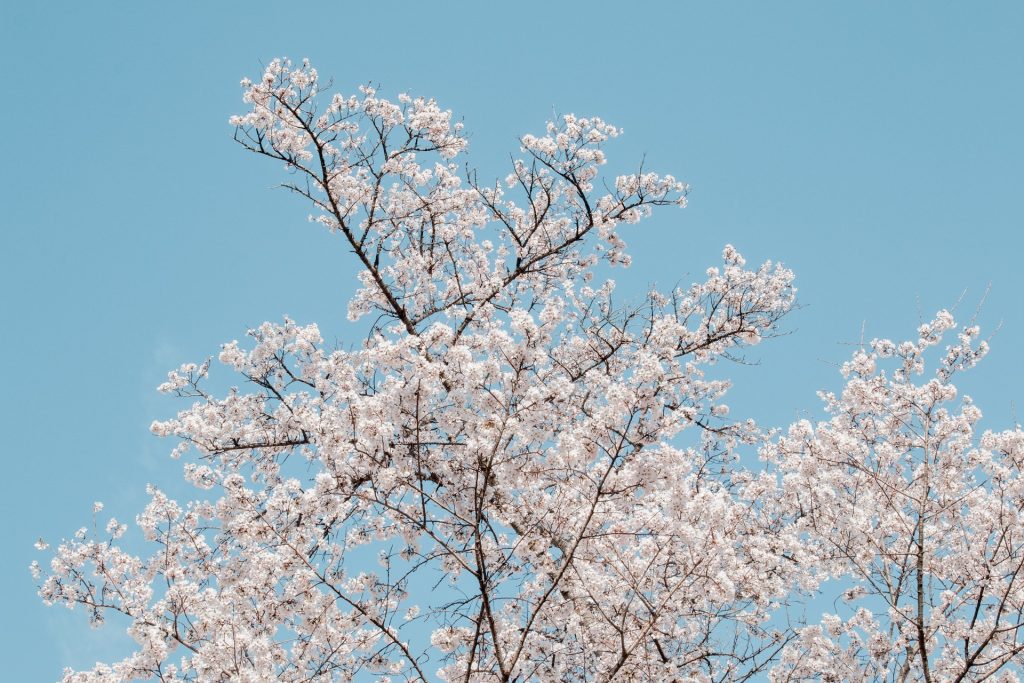As the temperature heats up and people are spending more time outdoors, the warm weather may have you re-evaluating the look of your lawn. When determining how to enhance your landscaping, native plants are a great option. Georgia has a gorgeous selection of native trees, flowers, and decorative plants to embellish your lawn. Not only are these plants beautiful, but they are also more durable. This is because they are more adapted to Georgia’s climate than the non-native plants that are often used in landscaping. Not sure which plants to choose or how to incorporate them? Read this post, and then contact POPS Landscaping to get started!
What are Native Plants?
Although there is some debate about how long a plant needs to be in an area for it to be deemed “native,” the Federal Register defines native plants as “naturally occurring, either presently or historically, in any ecosystem of the United States.” Some ecologists say that native plants should be inhabiting a specific region for thousands of years, while others say the species just need to have been there prior to European settlement of that area. Either way, these plants have formed symbiotic relationships with the wildlife in the area, meaning that they work together to help each other flourish. Native Plants thrive in the soil, light, and climate conditions of their region.
Why Should I Incorporate These Plants?
Native plants are great to install on your Georgia lawn for a plethora of reasons:
Native plants can make for great bird watching and plant health because they attract local fauna. They attract birds because they provide natural shelters and food sources. Therefore, native plants provide “watchable” wildlife habitats perfect for your backyard. Additionally, native plants are native food sources for insects, which are great for pollination and keeping your plants healthy. When there are not enough native plants in an area, the natural environments of the area suffer. By installing native plants in your landscapes, you can enjoy the fact that you are making a positive impact on the surrounding ecosystem.
Another great reason to install native plants in your landscaping is for their durability qualities. When it comes to weather extremes in Georgia, which can be exceedingly high or low, native plants are known to withstand these conditions far better than their imported counterparts. Native plants usually also require much less upkeep and care than non-native plants because they are better adapted to the soil, sunlight, and weather conditions of the area.
What Should I Evaluate When Implementing Native Plants In My Landscaping?
When trying to determine how to implement native plants in your landscaping, there are a variety of factors that need to be considered. First, you need to evaluate the geographic region you live in. Do you live in a high or low-altitude area? Is your soil dry or moist? Does your area experience stark high or low temperatures? Because of the diverse ecology of Georgia, all of these factors need to be considered to ensure that your native plants will thrive in your area.
What Native Plants Are Best For North Georgia Landscapes?
Trees:
Southern Sugar Maple: This small, spreading tree produces the most beautiful colors in the fall.
Flowering Dogwood: These southern staples are perfect for landscaping in North Georgia. These gorgeous flowering trees can grow from 20-40 feet tall. Their pink or white flowers bloom between March and October, meaning there is plenty of time to enjoy these blooms.


Decorative Plants:
Scarlet Buckeye: This gorgeous plant looks great in landscaping projects because they add a great pop of color to your yard
Bottlebrush Buckeye: Perfect for shady areas, the bottlebrush buckeye is known for being a low-maintenance plant that can grow fairly quickly.
flowers:
Azaleas: This Georgia staple is perfect for beautifying any area. Their pink or white flowers bloom best in shaded areas.
Cosmos: These gorgeous flowers not only are drought tolerant but also are known to attract butterflies.
Snapdragons: these unique blooms are the perfect way to spice up your yard. They were given their name because they look like the snout of a dragon.


Ready to Upgrade Your Lawn with Georgia Native Plants? Call POPS Landscaping!
Did this article get you motivated to install native Georgia plants on your lawn this summer? Let the professionals at Pop’s Landscaping bring your vision to life. Our services range from tree and plant installation, lawn care, tree and shrub pruning, and more – with high-quality work that exceeds expectations. We can handle your all-encompassing outdoor project, from beginning to end. Having a healthy outdoor space is essential for increasing your home’s curb appeal and improving your quality of life – let us help you create the landscape of your dreams today! Give us a call at 770-928-5658.



